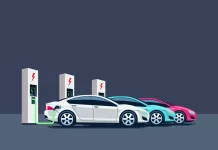
According to recent reports, researchers at Oak Ridge National Laboratory (ORNL) have made a significant breakthrough in wireless charging technology, achieving the world’s highest power density for a vehicle charging system in the light-duty passenger EV segment. Reports state that the researchers were able to wirelessly charge a light-duty passenger EV at 100 kW with 96% efficiency. This breakthrough marks a substantial advancement in the field of electric vehicle charging, offering promising implications for the future of EV adoption and infrastructure development.
WORDS BY ORNOL’S OMER IN A PRESS RELEASE
“We’ve achieved the highest power density in the world for a wireless charging system for this class of vehicle. “Our technology reaches power densities 8-10 times higher than conventional coil technology and can increase battery charge state by 50% in under 20 minutes… This is a breakthrough achievement, and opens the door to fast and efficient wireless charging for passenger electric vehicles.”
Unprecedented Power and Efficiency
As stated above researchers successfully demonstrated the capability to wirelessly charge a light-duty passenger EV at an impressive 100 kW with an exceptional efficiency of 96%. Utilizing a pioneering “lightweight polyphase electromagnetic coupling coil design,” the system enables power transfer more than eight times faster than previous models, delivering enough charge to cover approximately 350 miles (563 km) in just one hour.
Revolutionary Wireless Charging Technology
By equipping a Hyundai Kona EV with a receiver coil positioned above a 14-inch diameter . Notably, conventional coil technology in laboratory tests achieved a maximum power transfer of 120 kW. This achievement underscores the system’s cutting-edge capabilities and its potential to redefine the landscape of EV charging infrastructure. Additionally, the utilization of patented polyphase coils, known for their compact size and lightweight construction, enhances the system’s convenience and usability, while the incorporation of rotating magnetic fields further optimizes power delivery, promising a more efficient and accessible charging experience for EV owners.
Future Implications and Applications
The successful development of this cutting-edge wireless EV charging system holds immense potential for revolutionizing the EV landscape. With its unprecedented power output and efficiency, the technology paves the way for accelerated EV adoption, addressing key challenges related to charging infrastructure and range anxiety. Furthermore, the compact and convenient design of the charging system opens up new possibilities for integrating wireless charging into various environments, ranging from residential settings to public spaces, further enhancing the accessibility and convenience of electric vehicle ownership.






